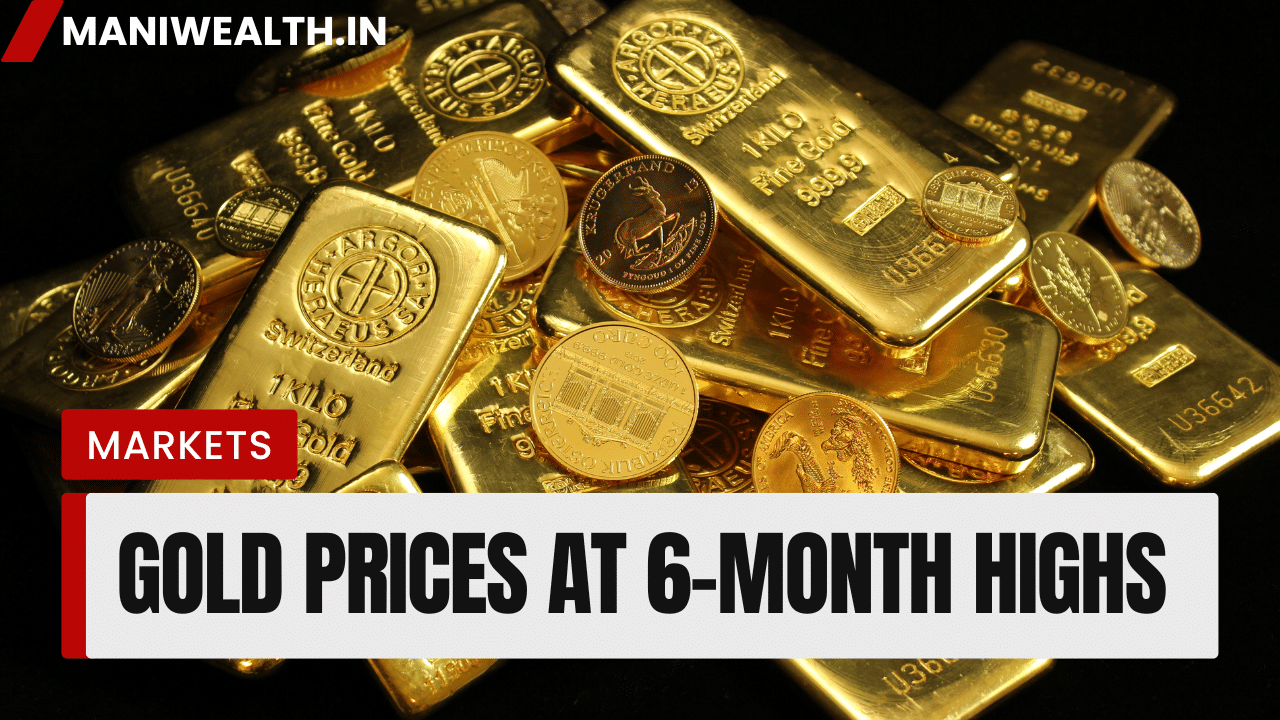The Path of Installments… A Bundle of Gold!
In the ever-shining world of gold, jewelry manufacturers have discovered a winning formula — offering gold through monthly installment schemes. These schemes are being hailed as golden opportunities, promising no depreciation, no commission, and complete flexibility. But are they truly as beneficial as they seem?
Let’s unpack the truth behind these glittering promises.

What Are Gold Schemes and Why Are They So Popular?
From local gold shops to high-end jewelry showrooms, gold saving schemes are gaining popularity. The concept is simple: customers deposit a fixed amount every month (say ₹10,000 or ₹11,000) for 11 months. In the 12th month, they can purchase jewelry with the accumulated amount — sometimes with an added bonus or discount.
It sounds great. Want to surprise your husband with a bracelet on his birthday? Or fulfill your wife’s wish for precious stones on your anniversary? These schemes seem to make dreams affordable. But here’s a word of caution — just as not everything that glitters is gold, not all schemes are what they appear to be.
Is There Legal Backing?

According to Section 73 of the Companies Act 2013, private companies are allowed to collect money from customers in installments and offer goods or services accordingly — but within 11 months, not a year. That’s why nearly all gold schemes you’ll see are capped at 11 months.
Does this legal allowance ensure safety? Not necessarily. After all, a driving license doesn’t guarantee you won’t meet with an accident! Legality does not always equal security. So, caution is essential.
The “20% Benefit” Many Are Talking About
Here’s why many people get attracted to these schemes: you pay no interest, and you often get more than what you paid for.
Let’s say you want to buy 2 tolas of gold jewelry worth around ₹1.20 lakhs. Instead of paying upfront, you opt for a gold scheme paying ₹11,000 per month for 11 months, totaling ₹1.21 lakhs. At the end of the term, due to waived depreciation and making charges, you may get gold worth slightly more — which could mean a return of at least 11%.
Factor in potential increases in gold prices during those months, and this “return” can go up to 20% or more. Gold is valued at the current market price at the time of purchase, so if prices have gone up, you’re essentially getting more value for your money.
The Business Angle: How Jewelers Profit
If consumers are gaining so much, are the jewelers losing out? Not at all.
The money collected every month from customers is used by jewelers as working capital. They buy gold, make jewelry, and sell it — turning a healthy profit in the process. That profit is reinvested, allowing their business to grow. So while customers get their benefits, the jewelers also keep their profits rotating.
It’s a win-win situation — if everything goes well.

Choosing Wisely: It’s Not Just About Offers
When joining a gold scheme, it’s tempting to go where the offers look most attractive. But the design variety matters even more. After all, the goal isn’t just to buy gold — it’s to buy beautiful gold jewelry you truly love.
Before committing, visit multiple stores, compare their terms, and check out their collections. Choose a scheme based on the jewelry you want to buy — not just on the monthly installment amount.
Remember: money doesn’t come easy — every rupee deserves wise spending.
Reduce the Risk: Spend Within Limits
Even if the scheme looks great on paper, don’t commit more than 10% of your monthly salary. Why? Because businesses can shut down unexpectedly. If the jewelry shop closes after four months, you shouldn’t be left devastated.
Always think long-term. If you’re planning jewelry for your daughters’ weddings, start early and aim to collect at least 10 tolas over time. But don’t chase gold at the cost of your financial health. Needs should always come before wants.
Final Thoughts: Gold, Forever a Passion

The fascination with gold will never fade. It’s part of our culture, our celebrations, and our milestones. Gold schemes, when chosen wisely and used cautiously, can be a smart way to buy the jewelry you love — without hurting your wallet.
But remember — glitter alone isn’t gold. Do your homework, stay within budget, and invest in what truly makes your heart sparkle.
| Year | Annual Return (%) |
|---|---|
| 2005 | 18.36 |
| 2006 | 23.00 |
| 2007 | 31.59 |
| 2008 | 4.32 |
| 2009 | 27.63 |
| 2010 | 29.52 |
| 2011 | 10.06 |
| 2012 | 7.14 |
| 2013 | -27.04 |
| 2014 | -1.72 |
| 2015 | -10.42 |
| 2016 | 8.56 |
| 2017 | 13.09 |
| 2018 | -1.58 |
| 2019 | 18.31 |
| 2020 | 25.12 |
| 2021 | -3.64 |
| 2022 | -0.28 |
| 2023 | 13.10 |
| 2024 | ~14.50 (est.) |
Key Takeaways:

-
Over the last 20 years, gold has delivered an average annual return of approximately 9–10%.
-
Best performing years: 2007, 2009, 2010
-
Worst performing year: 2013
-
Gold often performs well during times of economic uncertainty, high inflation, or weak stock markets.
Gold prices increase due to a mix of economic, political, and market-driven factors. Here’s a breakdown of why gold prices tend to rise, especially in recent years:
1. Inflation and Currency Devaluation
-
Gold is seen as a hedge against inflation. When the value of money declines (due to rising prices), people turn to gold to preserve their wealth.
-
If a currency (like the Indian Rupee or US Dollar) weakens, gold becomes relatively more valuable.
2. Low or Negative Real Interest Rates
-
When interest rates are low, the opportunity cost of holding gold (which doesn’t earn interest) is reduced.
-
If inflation is high and bank savings give poor returns, people prefer to invest in gold.
3. Geopolitical Uncertainty
-
During times of global tension (wars, trade disputes, political instability), gold is considered a safe haven.
-
Investors move away from volatile assets (like stocks) and buy gold to protect their capital.
4. Central Bank Policies and Buying
-
Many central banks (India, China, Russia, etc.) are increasing their gold reserves to diversify away from currencies like the dollar.
-
This increased demand pushes up gold prices.
5. Stock Market Volatility
-
When stock markets are unstable or falling, investors seek safer investments like gold.
-
Gold provides a non-correlated asset — it behaves differently from stocks and bonds.
6. Supply Constraints and Mining Costs
-
Gold is a finite resource. Mining new gold is becoming more expensive and difficult.
-
Any disruption in supply (due to strikes, political instability in gold-producing countries, or environmental policies) can increase prices.
7. Demand from Emerging Markets
-
In countries like India and China, cultural and economic demand (weddings, festivals, savings habits) contributes to strong and rising gold consumption.
-
As disposable income rises, so does the retail demand for gold jewelry and coins.
8. Weakening Trust in Financial Systems
-
When trust in banks, financial markets, or governments erodes, people move their wealth into tangible assets like gold.
-
Events like banking crises or debt defaults can lead to a surge in gold buying.
Summary
| Reason | Effect |
|---|---|
| Inflation | More gold buying |
| Low interest rates | Higher gold appeal |
| Political instability | Gold as safe haven |
| Central bank buying | Higher demand |
| Market volatility | Portfolio diversification |
| Supply issues | Price increases |
| Rising demand | Upward price pressure |
✨ About Me
Hi! I’m Manikanta Reddy, a passionate finance enthusiast with a strong understanding of money management, personal finance, and smart investment strategies. I believe financial literacy is the foundation of a secure and stress-free life — and I’m here to share practical insights, real-life examples, and simplified advice to help you make better financial decisions.
Whether it’s choosing between paying off a loan or investing, building emergency funds, or planning for retirement — I love breaking down complex topics into easy, actionable tips that anyone can follow.
Let’s learn, grow, and build wealth — the smart way. 💰





